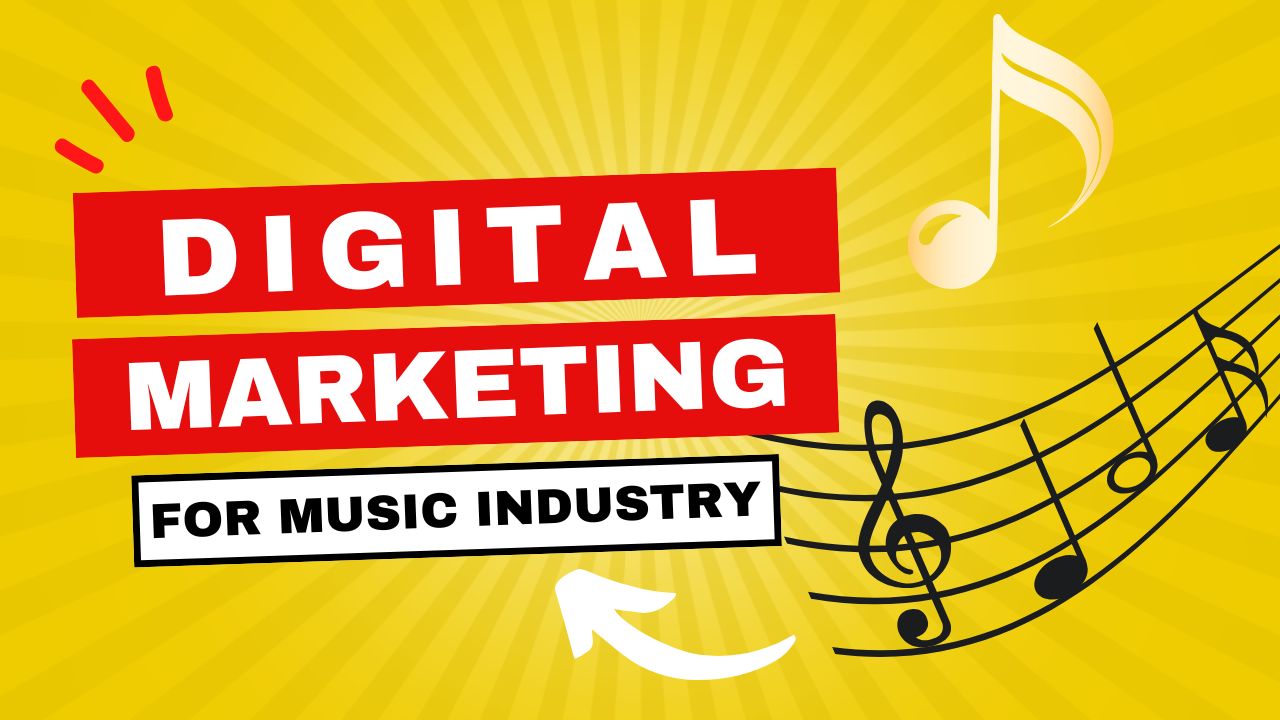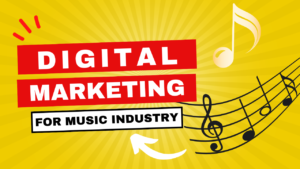Using Data Analytics to Drive Digital Marketing Decisions in the Music Industry

In the fast-paced and competitive music industry, data analytics has emerged as a powerful tool to help artists, labels, and marketers make informed decisions. As digital platforms such as Spotify, YouTube, Apple Music, and TikTok dominate music consumption, leveraging data is no longer optional—it’s essential. By understanding fan behavior, tracking performance metrics, and tailoring marketing strategies, data analytics can significantly enhance the effectiveness of digital marketing campaigns.
This article explores how data analytics can transform digital marketing efforts in the music industry and provides actionable insights for leveraging it effectively.
Why Data Analytics Matters in the Music Industry
Data analytics bridges the gap between artists and their audience. In a world where millions of tracks compete for attention, understanding what resonates with listeners is critical. With the wealth of data available through streaming platforms, social media, and digital advertising tools, artists and labels can make decisions based on real-world insights rather than intuition alone.
Key Benefits of Data Analytics:
- Audience Insights: Gain a deep understanding of who your listeners are, including their age, location, and preferences.
- Performance Tracking: Monitor the success of marketing campaigns, track streams, and analyze fan engagement.
- Personalized Marketing: Use data to deliver targeted content to specific segments of your audience.
- Resource Optimization: Allocate budgets more effectively by identifying the most impactful strategies and channels.
Understanding the Types of Data Available
The first step in leveraging data analytics is understanding the different types of data accessible through various platforms:
- Streaming Platform Data
Streaming services like Spotify, Apple Music, and Deezer provide valuable insights:- Demographics: Information on listener age, gender, and location.
- Listening Behavior: Data on playlists, repeat listens, and time spent listening.
- Engagement Metrics: Performance of songs over time, skips, and save rates.
- Social Media Analytics
Platforms like Instagram, TikTok, and YouTube offer analytics on content performance:- Engagement Rates: Likes, comments, shares, and impressions.
- Audience Demographics: Who interacts with your content and when.
- Trends and Virality: Which posts or videos are gaining traction.
- Website Analytics
For artists and labels with official websites:- Traffic Sources: Where visitors are coming from (social media, search engines, etc.).
- Behavior Flow: How users navigate the site and which pages they engage with most.
- E-commerce Insights: Sales data for merchandise, concert tickets, or music downloads.
- Digital Advertising Data
From platforms like Google Ads and Facebook Ads:- Ad Performance: Click-through rates (CTR), conversions, and cost-per-click (CPC).
- Audience Segmentation: Insights into which ads resonate with different audience segments.
Key Tools for Music Industry Analytics
To effectively analyze and act on data, it’s important to use the right tools:
- Spotify for Artists: Provides real-time streaming data and audience insights for artists.
- YouTube Analytics: Tracks video views, watch time, and audience demographics.
- Google Analytics: Offers in-depth website performance metrics.
- Facebook Ads Manager: Helps analyze ad performance and audience behavior.
- Hootsuite or Buffer: Social media management tools that offer built-in analytics.
- Chartmetric: A comprehensive analytics tool specifically for the music industry, aggregating data from streaming, social media, and charts.
How to Use Data to Optimize Digital Marketing Campaigns
Here are actionable ways to use data analytics to improve your marketing strategies:
- Identify Your Core Audience By analyzing demographic data from streaming and social media platforms, you can identify your primary audience. For example, if your music resonates with young adults in urban areas, you can tailor your content and advertising to cater to their preferences.
- Track Song Performance Use analytics to monitor how songs perform over time. For instance:
- If a track gains momentum on a playlist, consider increasing promotional efforts to capitalize on its growth.
- If a song has high skip rates, it might not resonate with your audience, signaling a need for adjustments in your future releases.
- Tailor Content for Different Platforms Data can reveal which types of content work best on different platforms:
- TikTok: Short, engaging videos often featuring dance challenges or trends.
- Instagram: Visually appealing content, behind-the-scenes footage, and reels.
- YouTube: Longer-form content like music videos, interviews, and tutorials.
- Run Targeted Advertising Campaigns Use advertising data to refine your campaigns:
- Focus on geographic areas where your audience is most concentrated.
- Experiment with ad formats (e.g., carousel ads on Instagram or pre-roll ads on YouTube) and optimize based on performance.
- Analyze Fan Engagement Trends Monitor how fans interact with your content. A sudden increase in engagement might signal a viral moment worth amplifying, while a decline could suggest it’s time to refresh your strategy.
- Optimize Tour Planning Data can inform decisions about where to tour by highlighting locations with high listener density and engagement.
Real-World Examples of Data-Driven Marketing in Music
- Lil Nas X and TikTok Virality
Lil Nas X used TikTok analytics to monitor the viral growth of “Old Town Road,” amplifying the trend by engaging with his audience and creating more content around the song. - Beyoncé’s Surprise Album Drop
Beyoncé’s data team analyzed her fanbase to determine the best time for a surprise release, maximizing engagement and sales. - Spotify Wrapped Campaigns
Spotify uses personalized data to create its annual Wrapped campaign, encouraging users to share their listening habits, which in turn promotes artists.
Challenges and Ethical Considerations
While data analytics offers immense potential, it’s not without challenges:
- Over-reliance on Data: Creativity should still guide decisions, as data alone cannot predict cultural impact or artistic merit.
- Privacy Concerns: Ensure that data collection and usage comply with privacy laws and ethical standards.
- Interpreting Data Correctly: Misinterpreting metrics can lead to misguided strategies, so it’s important to understand the context behind the numbers.
Conclusion
In the digital age, data analytics is a game-changer for the music industry. By using insights from streaming platforms, social media, and digital advertising tools, artists and labels can make smarter marketing decisions, connect with fans on a deeper level, and maximize their impact. However, successful implementation requires a balance of creativity, analytical skills, and ethical considerations.
Whether you’re an independent artist or a major record label, embracing data-driven strategies can give you a competitive edge in an ever-evolving industry.







